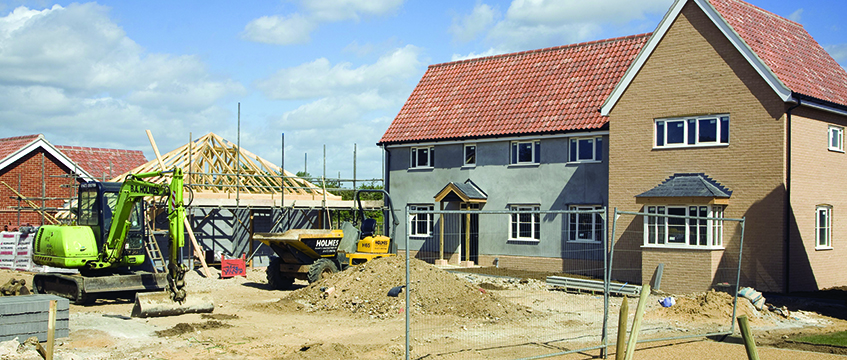Once the word “Housing” was added to DCLG’s name (turning it into the Ministry of Housing, Communities & Local Government) in January 2018, you just knew we were in for a big year of governmental publications on that very subject – packed with good intentions and a swathe of recommendations.
Admittedly, that’s partially because some of the big ones were scheduled in. But the new NPPF, the social housing green paper, the government response to the official housing white paper, the Letwin review and the Housing Delivery Test Measurement Rule Book (among others) have surely contributed to the most active year in public sector history for sheer volume of pages dedicated to housing in the UK.
Measuring progress on any of those during 2019 will be difficult, given the long-term nature of the multitude of proposed solutions to the housing crisis – but a year-on-year move in the right direction on the supply pipeline of new homes coming through would be a welcome start.
Going down
Preliminary figures from Radius Data Exchange for residential developments above 10 units in England indicate that permissions fell in 2018 by 9.4% against 2017, which itself saw a fall of 19.1% against 2016.
Most alarmingly, the areas expected to see population growth increase dramatically over the next two decades have not been tracking in the right direction over the past 24 months.
Of the 40 local authorities predicted to see the biggest swell in number of households by 2041, a quarter have had two consecutive years of decreases in residential units being permitted – compared with just five of those authorities seeing consecutive year-on-year increases in the number of units coming through the planning pipeline.
Naturally, the nature of Brexit at the end of March will have an influence over just how likely a reversal of this trend is. Access to materials and labour will change overnight without a transition period if a no-deal Brexit is the result – and the short- to medium-term impact on the economy would probably deter some housebuilders from going in for planning.
There could exist a scenario where local authorities take more responsibility on to themselves to deliver new homes if private enterprise becomes more jittery, with councils’ borrowing cap for housebuilding having been lifted in October last year.
Having had a couple of decades away from making significant contributions to housing stock, however, there shouldn’t be too much expectation on the public sector to have an immediate impact on overall unit volumes in the short term.
As well as ensuring unit volumes are met, we also need to resolve the crisis through provision of an adequate mixture of tenure types – and, on that front, I am particularly interested to see how the Letwin review’s recommendation for immediately incentivising more diversification of housing tenure and type on big sites will manifest itself.
Separate market
The draft analysis of the review pointedly mentions the private rental sector as being “essentially a separate market” to traditional open sales – and would require shorter build-out times for construction, given that the goal for PRS is to have all spaces developed and returning income as quickly as possible, rather than delivering at a rate that simply maintains sale price equilibrium.
So, how will those mixed tenure types be incentivised in the short term? A similar “fast track” through planning to mirror Sadiq Khan’s policy in London to meet affordable housing thresholds? Or simply through funding models?
However it comes about, it will hopefully show itself in a few notable examples this year – as 2019 needs to be at least the start of translating these good intentions and recommendations from page to practicality.
Main image © General Images/UIG/REX/Shutterstock
To send feedback, e-mail graham.shone@egi.co.uk or tweet @GShoneEG or @estatesgazette











